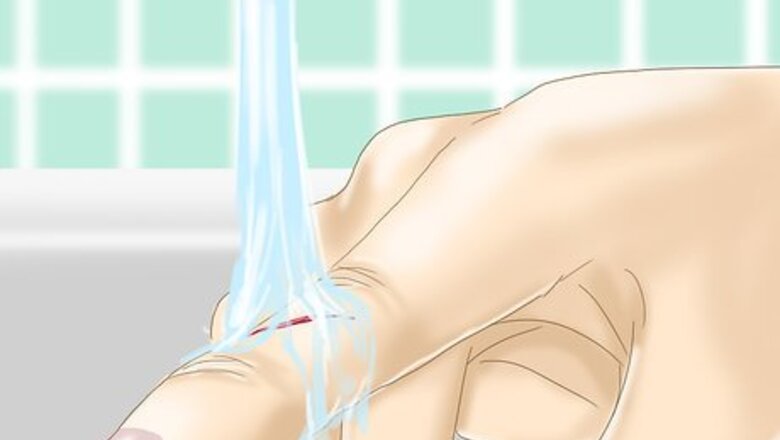
views
Cleaning the Paper Cut

Rinse the cut with cool, clean water to remove any dirt or debris. Cool water can help take the sting out of the cut.
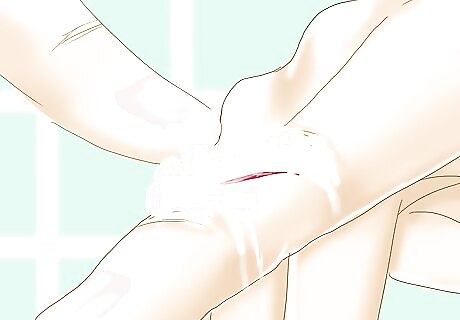
Scrub gently with water and mild soap. Be gentle with your wound. Scrubbing too hard can open up the paper cut further.
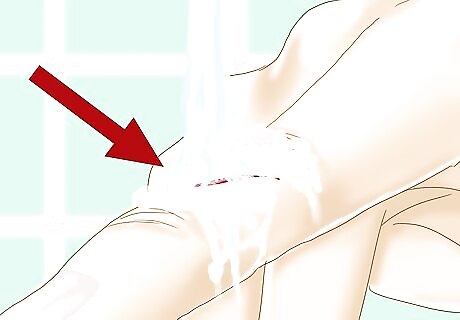
Rinse your wound under cool, clean water until all the soap has been rinsed away. In the absence of cool, running tap water, utilize a bulb syringe or poke a hole in a plastic bottle and squeeze.
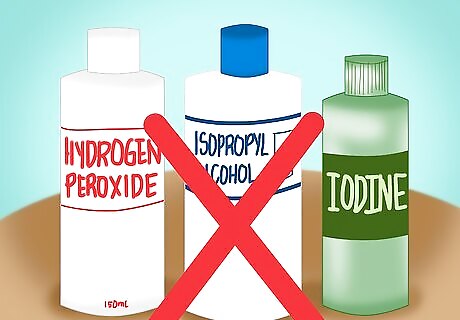
Avoid hydrogen peroxide, isopropyl alcohol, or iodine. The properties that kill bacteria can also damage healthy cell tissue. While they rarely cause serious harm, they could slow your rate of healing.

Stop the bleeding if necessary. If the cut is bleeding a lot or it doesn't stop quickly, stop it by applying gentle pressure with a clean washcloth or bandage.
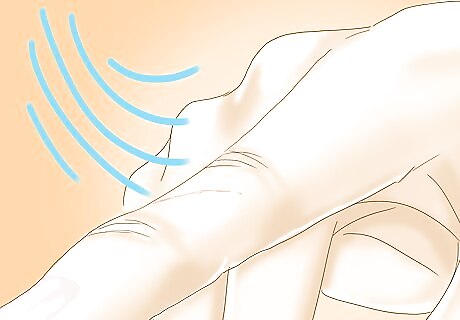
Let your paper cut heal on its own. Keep it clean. The air will help dry it out and within a day you’ll hardly remember it happened.
Bandaging the Paper Cut
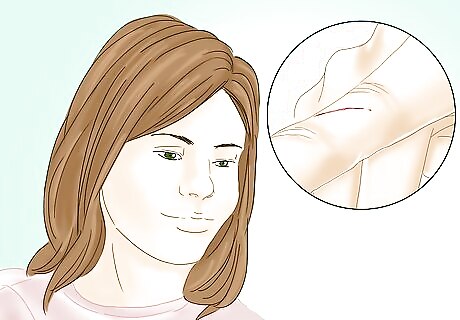
Keep in mind it’s just a papercut, a mere flesh wound. It will easily heal on its own. However, sometimes bandages lessen the pain and prevent you from picking at the cut.
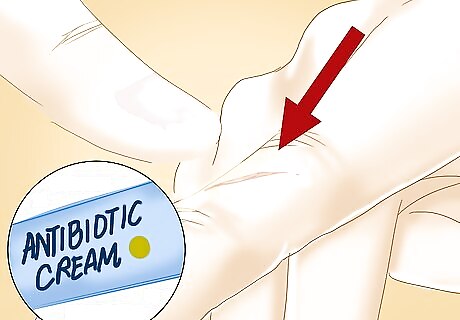
Apply a thin layer of antibiotic cream or ointment to help keep the surface area moist. While they do not help the wound heal faster, they discourage infection and encourage the body’s healing process. Look for a cream or ointment that has analgesic to help decrease any pain. Some ingredients in antibiotic cream or ointments can cause an adverse, mild rash. If you see any sign of a rash, discontinue the use of the ointment.
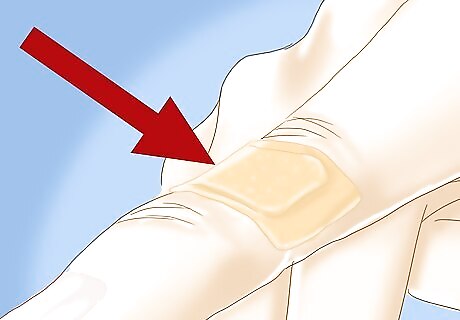
Bandage the papercut. Use a clean bandage, especially if it is in an area that gets dirty easily, like your fingers or hand. This will limit the amount of bacteria you come into contact with. This will also protect you from knocking the wound open. Put your adhesive strip on snug, but not so tight you will restrict blood flow to your wound. You want your blood to have access to the wound to better heal you!
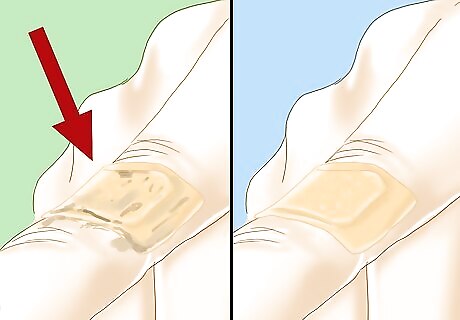
Change your bandage: Change your bandage if the bandage becomes wet or dirty. You want to keep the area as clean as possible to encourage healing.

Use liquid adhesive if you are unable to keep your bandage dry. Some products offer a topical anesthetic that helps to alleviate some of the pain. Check the pharmacy for those made specifically for minor skin wounds. Super glue products can sting, but also cover the wound and dry to hold the edges of the skin together. These products are not intended to be used directly on skin, so they will sting and cause some burning if you choose to utilize this method.
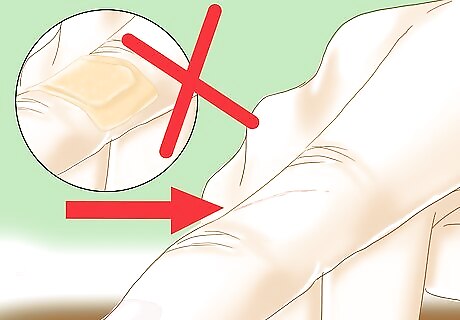
Remove the bandage once the cut begins to heal. For most paper cuts, healing only takes a few days. Leaving the bandage on too long can prevent the cut from getting the oxygen it needs to heal properly.
Healing the Paper Cut Using Home Remedies
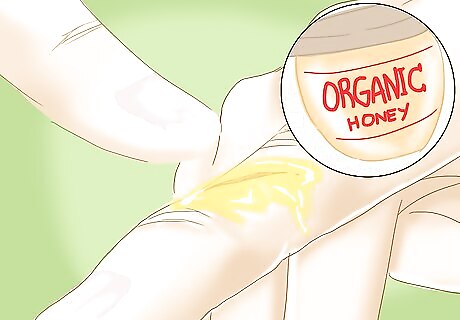
Rub raw honey onto the cut. It’s important that the honey is raw; if it’s cooked, all the antibacterial enzymes are removed from it. Home remedies are not substitutes for medical attention if you need it. The things in this section are simply things to try that may, according to some sources, help your cut to feel better faster. You still need to wash the cut properly, use precautions for preventing infection (cover the wound while it’s unhealed), and seek medical attention if it becomes infected.
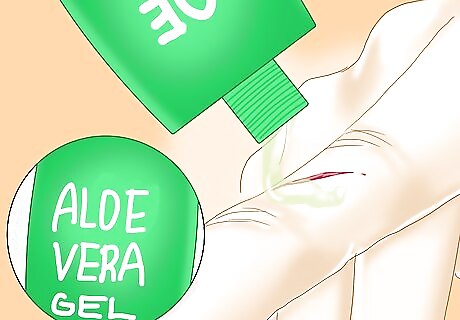
Squeeze a little fresh aloe vera gel onto the paper cut. You can also use commercially purchased gel. Aloe vera is known for speeding up the healing process.
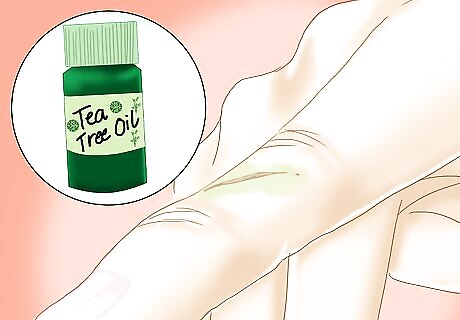
Use calendula salve, lavender oil, goldenseal ointment, or tea tree oil on your cut. All of these can be found in most health stores, and are known to help wounds to heal faster. Apply them directly to the cut or to your bandage 2-4 times a day.
Soak your finger in warm water. Fill a coffee-cup with very warm water and place a finger cot on your finger to keep it dry. Place your finger in the water by resting your hand on the rim of the cup and letting your finger dangle into the water. Let it soak for 10-15 minutes and repeat 3-4 times daily. If the cut does not improve or gets worse, contact a health-care provider. You can find a finger cot at any drugstore.
Keep a healthy routine to heal naturally. Stay hydrated throughout the day and eat a balanced diet to keep your body healthy. Try to get at least 30 minutes of exercise during the day and 6-8 hours of sleep each night.




















Comments
0 comment